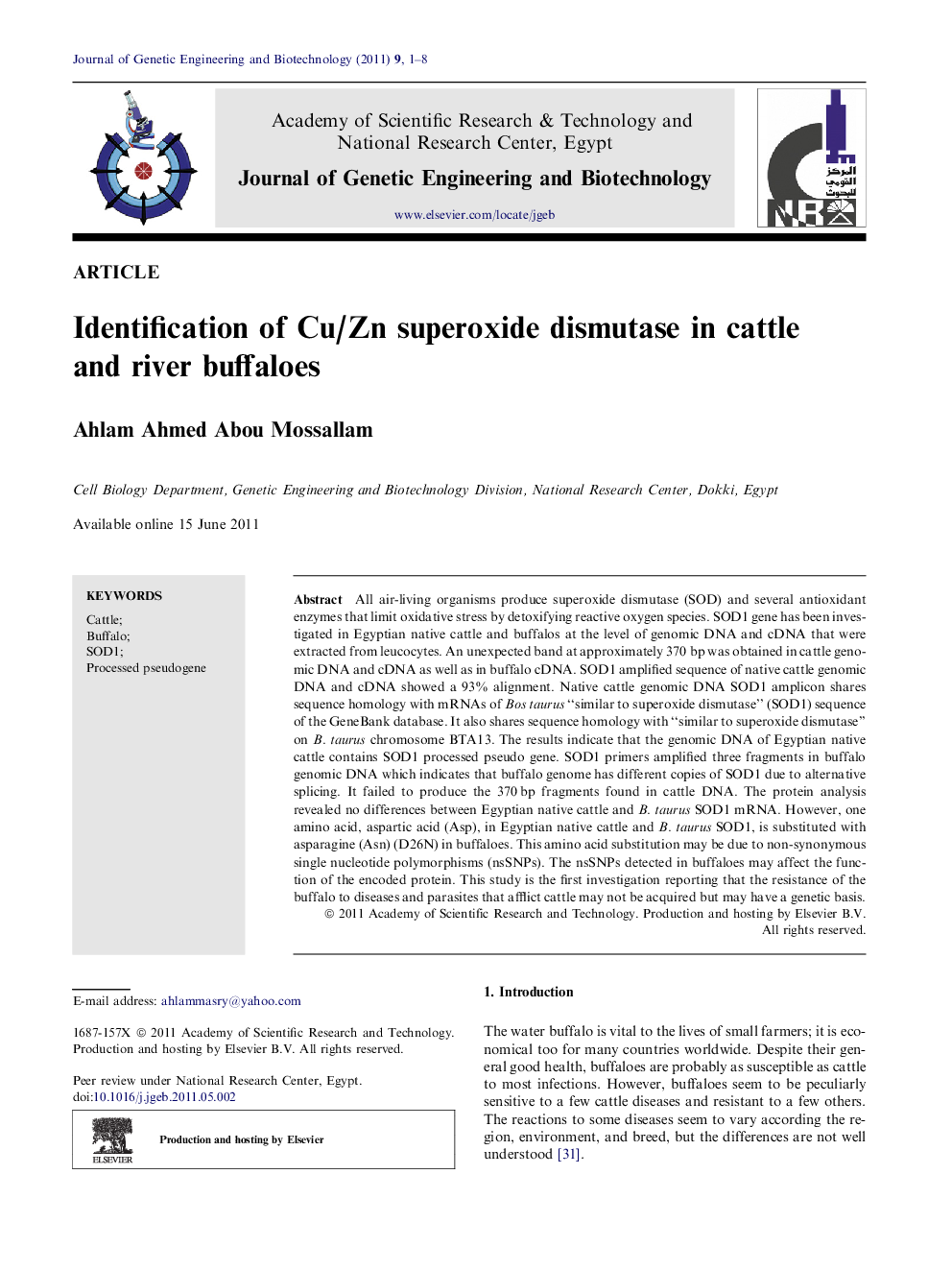| Article ID | Journal | Published Year | Pages | File Type |
|---|---|---|---|---|
| 2087988 | Journal of Genetic Engineering and Biotechnology | 2011 | 8 Pages |
All air-living organisms produce superoxide dismutase (SOD) and several antioxidant enzymes that limit oxidative stress by detoxifying reactive oxygen species. SOD1 gene has been investigated in Egyptian native cattle and buffalos at the level of genomic DNA and cDNA that were extracted from leucocytes. An unexpected band at approximately 370 bp was obtained in cattle genomic DNA and cDNA as well as in buffalo cDNA. SOD1 amplified sequence of native cattle genomic DNA and cDNA showed a 93% alignment. Native cattle genomic DNA SOD1 amplicon shares sequence homology with mRNAs of Bos taurus “similar to superoxide dismutase” (SOD1) sequence of the GeneBank database. It also shares sequence homology with “similar to superoxide dismutase” on B. taurus chromosome BTA13. The results indicate that the genomic DNA of Egyptian native cattle contains SOD1 processed pseudo gene. SOD1 primers amplified three fragments in buffalo genomic DNA which indicates that buffalo genome has different copies of SOD1 due to alternative splicing. It failed to produce the 370 bp fragments found in cattle DNA. The protein analysis revealed no differences between Egyptian native cattle and B. taurus SOD1 mRNA. However, one amino acid, aspartic acid (Asp), in Egyptian native cattle and B. taurus SOD1, is substituted with asparagine (Asn) (D26N) in buffaloes. This amino acid substitution may be due to non-synonymous single nucleotide polymorphisms (nsSNPs). The nsSNPs detected in buffaloes may affect the function of the encoded protein. This study is the first investigation reporting that the resistance of the buffalo to diseases and parasites that afflict cattle may not be acquired but may have a genetic basis.
